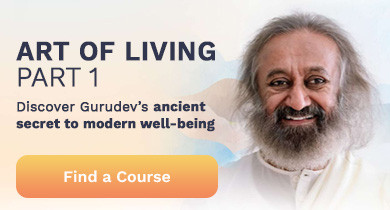Patanjali Yoga Sutra Knowledge Sheet 66
Contd. from knowledge sheet 65
"Tatra ahimsa satya steya brahmacharya parigraha yamaha'' (II Sutra 30)
Tatra = there; Ahimsa = non-violence; Satya = truth; Asteya = non-stealing; Brahmacharya = moving in the Brahman ; Aparigraha = non-accumulation; yamaha = are the yamas or restraints.
"Non-violence, truth, non-stealing, moving in the Brahman, non-accumulation are the five yamas."
Ahimsa - non violence, Satya - truth, asteya – non-stealing, brahmacharya - moving in brahman, moving in the greatness, aparigraha - non-accumulation. These are the five yamas.
"Jiti desha kala samaya navachchinnaha sarvabhouma mahavratam'' (II Sutra 31)
Jiti = life-state; Desha = country; Kala = time; Samaya = cicumstances; Sarvabhouma = universal; Mahavratam = the great vow.
"The great vows are universal and are not limited by life state, country, time or circumstances."
These are the greatest words because it is applicable in all places, at all times, to all people, throughout, without exception. They are certain laws which can apply just to certain people, certain places, at certain times. It is not universal. But these five principles are Universal. An animal does not go into violence for no reason. Wild animals hunt only when they are hungry and when they want to eat. They just do not go and hunt or bite anybody out of pleasure. But human beings do. They go hunting for no reasons. A python eats one rat in a month and that's it. It sleeps for the rest of the month. Just one rat a month is good enough. Though it is scary and dangerous, it can swallow a goat or eat something bigger. It can stay for several months doing nothing. It will not harm or kill any other animal.
But human beings in the name of God, in the name of love, they kill each other. Mindless violence is prevalent in the world in the name of country, in the name of religion, in the name of race. This is absolute nonsense. This is total lack of viveka, total lack of wisdom. A violent person cannot listen to anybody. His ears are sealed off. Why does violence come? How does it come? It is due to frustrations. Mind gets frustrated and frustration builds up. A big question mark comes up. That very question turns into violence, 'why, why, why?' It catches on to the surrounding. A crowd commits violence. Individually a person may not be able to do that violent act, but when that person is in the crowd he joins hands. Viveka is when a person takes to nonviolence, "I will not kill any animal, any life on this planet. Consciously or unconsciously". Already without your knowledge you are destroying many creatures. You walk and many ants are dying under your feet. You are not killing anyone. It is just happening. But an intention to destroy something, an intention to do violence can destroy your very basis, your very own root. Dropping this intention for violence is ahimsa.
Then satya. It is to be with what is right now, to be with something that is not changing. To know that something deep in you is not changing. Satya does not mean speaking the truth. Do you see what I am saying? Satya is total commitment for truth. It is not just words. Unfortunately people mistake satya to be just speaking words. Many people consider being blunt as truthful. What is the effect of ahimsa? Patanjali, a scientist gives a beautiful explanation.
<<The eight limbs of yogaGetting established in truth and non-violence is yoga >>
(This is part of a series of knowledge sheets based on Gurudev Sri Sri Ravi Shankar's commentaries on Patanjali Yoga Sutras.)





























